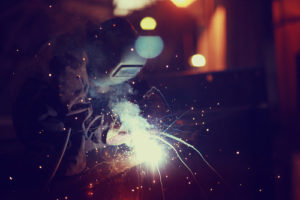
Anodizing An Alloy
Anodizing is used to increase the thickness of a coating on the surface of an alloy with an aluminum oxide layer. It is a durable surface treatment method, which generally withstands corrosion.
How Anodizing Works?
It is achieved by immersing aluminum alloy into an electrolytic solution such as sulfuric acid. An electrolyte is a solution that is electrically conductive, and one with plenty of negative and positive oxygen ions that requires swapping. In other words, a positive charge is passed through to aluminum for making it to an anode, and a negative electric charge is applied to plates that are suspended in an electrolyte. An anodizing tank is used for this and cathodes to apply direct current. This releases positive oxygen ions to negative plates and negative oxygen ions to a positive anode or the aluminum atom on the part’s surface that is anodized.
What are Barrier Layers?
The reaction to electric current causes certain pores on the surface of aluminum, as dense positive ions escape. It forms geometrical patterns and starts eroding down to the part’s substrate. The aluminum coating mixes with negatively charged oxygen ions for creating aluminum oxide layer. It acts as a barrier against potential chemical reactions along the porous spots formed on the surface.
What is Type III Anodizing?
Hard anodizing offer further protection against corrosive agents and withstands wear, especially in corrosion-prone environs or in moving mechanical components that are subject to friction. It is achieved by passing the direct current until the pore’s depth reaches in excess of 10 microns, which can be even more than 25 microns depending on the required thickness. Such kind of anodizing makes the surface of the component even more durable or resistant to corrosion.
Does Aluminum Require Protection against Corrosion?
Even though aluminum does not rust, it is still subject to oxidation. Oxygen can form compounds when exposed to other elements in the atmosphere. When aluminum gets exposed to the environment, it forms an aluminum oxide layer on its surface, which can protect corrosion. However, aluminum should resist elements other than water and oxygen, including saltwater spray, acid rain, or other foreign contaminants, which may cause a weak aluminum oxide coating on the surface of a component to peel off. Henceforth, alloys that contain aluminum will require a surface treatment to resist corrosion triggered by a release of corrosive agents in extreme environs.
